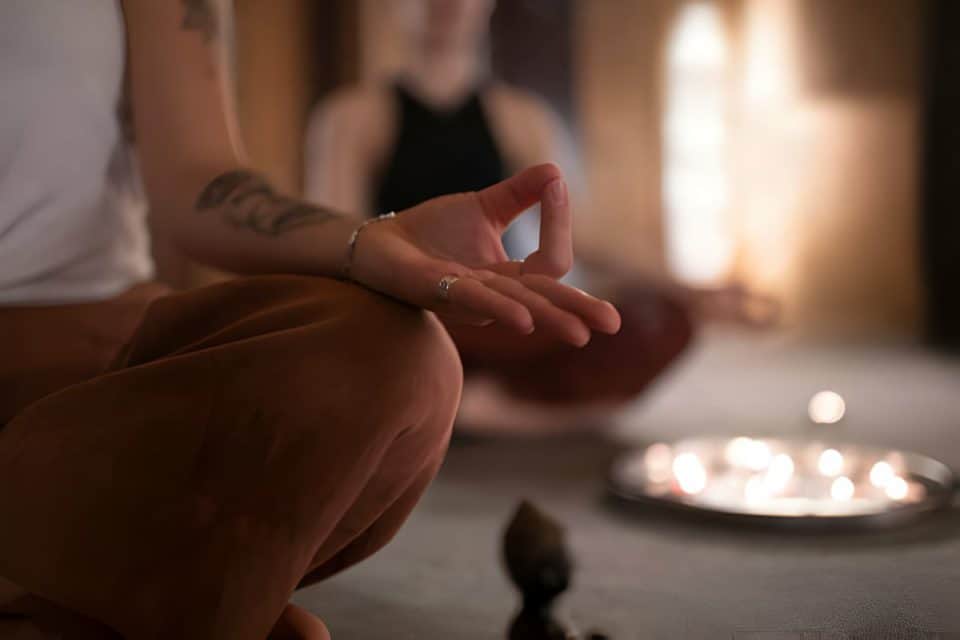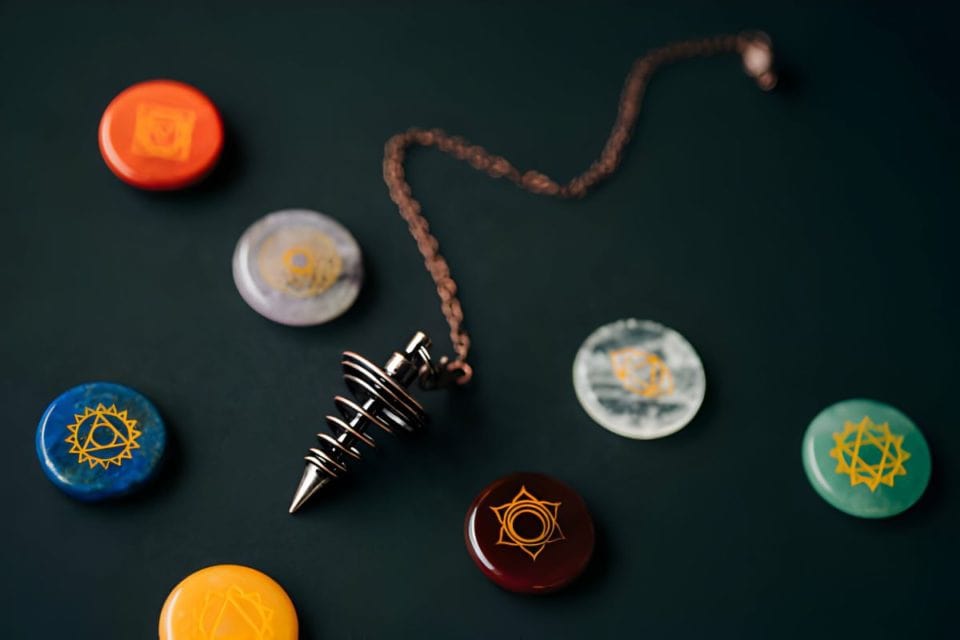In the bustling streets of Manila, a woman finds solace in the gentle hands of a Pranic healer, feeling waves of energy cleanse and rejuvenate her spirit.
Meanwhile, in a tranquil Japanese village, a man closes his eyes as the warm touch of a Reiki master channels universal life force into his being. Though miles apart, these scenes echo a universal quest: the search for holistic healing in an increasingly chaotic world.
With over 60% of the global population turning to alternative therapies, the allure of energy healing is undeniable.
But how does one choose between the myriad of practices?
Enter the realms of Pranic Healing and Reiki, two leading modalities that promise transformation and balance. In this guide, we’ll journey through their origins, techniques, and unique benefits, offering a compass to navigate the vast ocean of energy healing.
Historical Background: Pranic Healing vs. Reiki
Though distinct in their origins, the histories of Pranic Healing and Reiki share a common thread: visionary founders who sought to bring the transformative power of energy healing to the masses.
Both modalities, rooted in ancient wisdom yet shaped by modern pioneers, offer a bridge between the seen and the unseen, the tangible and the ethereal.
Origins of Pranic Healing
Pranic Healing, rooted in ancient esoteric teachings, was brought to the forefront of modern consciousness by Grand Master Choa Kok Sui from the Philippines.
Drawing inspiration from age-old practices and wisdom, Master Choa Kok Sui spent years researching, experimenting, and refining the techniques that today form the foundation of Pranic Healing.
His vision was to demystify the world of energy healing, making it accessible and understandable to all, irrespective of their cultural or religious background. Through his teachings, what was once reserved for select initiates became a global movement, touching lives across continents.
Origins of Reiki
Reiki, which translates to “universal life energy” in Japanese, traces its origins back to the early 20th century. Dr. Mikao Usui developed the Reiki healing system after a profound spiritual experience on Mount Kurama in Japan.
Legend has it that during a meditative retreat, Dr. Usui received the symbols and techniques that became the pillars of Reiki practice. He then embarked on a mission to share this newfound knowledge, healing and teaching others.
Over time, Reiki masters carried the torch, spreading the practice beyond Japan’s shores, making it a universally recognized and revered form of energy healing.
Core Principles and Philosophies
Both Pranic Healing and Reiki, while distinct in their methodologies, converge on the idea that universal energy governs life and healing.
They champion the belief that by understanding and harnessing this energy, individuals can achieve holistic well-being, transcending physical health to embrace emotional, mental, and spiritual harmony.

Fundamental Beliefs of Pranic Healing
Pranic Healing operates on the foundational belief that the body possesses an innate ability to heal itself. It views physical or emotional ailments as manifestations of disruptions in the body’s energy field.
By cleansing and rejuvenating this energy field, balance can be restored, leading to healing. Another cornerstone of Pranic Healing is the concept of ‘prana’ or life force. This vital energy in the air, sun, and earth can be harnessed and directed to heal.
Master Choa Kok Sui emphasized the non-religious nature of Pranic Healing, asserting that it’s a science of energy that transcends religious and cultural boundaries.
Core Tenets of Reiki
Reiki revolves around the universal life force energy, which flows through all living beings. Practitioners believe channeling this energy can promote healing, balance, and well-being.
At the heart of Reiki are the Five Reiki Principles or Precepts, which serve as ethical guidelines for living a fulfilling life. These are: Just for today, I will not be angry; I will not worry; I will be grateful; I will do my work honestly; and I will be kind to everyone.
Additionally, Reiki emphasizes the importance of attunement, where a Reiki master transfers energy and symbols to a student, enabling them to access and channel the Reiki energy.
Chakras and Energy Flow
While both Pranic Healing and Reiki recognize the central role of chakras in regulating energy flow, their methodologies differ.
Pranic Healing often employs a no-touch technique, working on the energy field around the body, while Reiki predominantly uses hands-on practices.
Yet, at their core, both modalities aim to achieve the same goal: ensuring that the chakras function optimally and facilitating a harmonious flow of energy that underpins holistic health.
Pranic Healing’s View on Chakras
In the realm of Pranic Healing, chakras are visualized as whirling energy centers, pivotal in regulating the body’s energy flow. Each chakra corresponds to specific organs and emotional and mental well-being facets.
For instance, the heart chakra in the center of the chest governs the physical heart and emotions of love and compassion. When a chakra is blocked or imbalanced, it can lead to physical ailments and emotional disturbances.
Pranic Healing techniques focus on cleansing these chakras, removing stagnant energy, and replenishing them with fresh prana, ensuring a harmonious flow of vitality throughout the body.
Reiki’s Approach to Energy Centers
Reiki, too, acknowledges the significance of chakras in maintaining holistic health. While the foundational principles remain similar, Reiki strongly emphasizes the hands-on or hands-on healing technique.
Practitioners channel the universal life force energy through their palms, directing it towards specific chakras to promote healing and balance. The intuitive connection with the recipient’s energy field is crucial for Reiki healers.
They often sense the energy blockages or imbalances in the chakras and work to restore a smooth, uninterrupted flow of energy, bringing about a sense of peace and well-being.
Techniques and Practices
Both Pranic Healing and Reiki, while distinct in their techniques, are rooted in the understanding that energy, when harnessed and directed with intention, has the power to heal and transform.
Whether it’s the systematic approach of Pranic Healing with its scanning and energizing or the intuitive, symbol-driven practice of Reiki, both modalities offer unique pathways to holistic well-being.
Key Techniques of Pranic Healing
Pranic Healing, as envisioned by Master Choa Kok Sui, is a systematic approach to energy healing. One of its foundational techniques is ‘scanning,’ where practitioners use their hands to sense the energy field or aura around a person, detecting areas of congestion or depletion.
Once identified, the ‘cleansing’ process begins, removing stagnant or diseased energy. This is often followed by ‘energizing,’ where fresh prana is channeled into the affected areas to rejuvenate and heal.
Another distinctive practice is the use of ‘color pranas,’ where specific colors, each with its unique vibrational frequency, are employed for targeted healing. For instance, blue prana might be used for physical healing, while gold prana could be used for spiritual development.
Essential Practices of Reiki
Reiki healing is characterized by its simplicity and the profound connection between the healer and the recipient.
A cornerstone of Reiki is the ‘laying on of hands,’ where practitioners place their hands on or just above specific areas of the body, channeling the universal life force energy.
This energy, guided by its innate wisdom, flows to where it’s needed most, promoting healing and balance. Another integral aspect of Reiki is the use of sacred symbols. These symbols, introduced during attunement sessions, serve as keys that unlock higher frequencies of energy.
By drawing or visualizing these symbols, Reiki practitioners can amplify their healing power, address specific issues, or even send healing energy across distances.
Benefits and Outcomes
While the techniques of Pranic Healing and Reiki differ, their outcomes converge on a singular truth: the transformative power of energy.
In their unique ways, both modalities facilitate a journey from disease to ease, from imbalance to harmony. For those who tread this path, the benefits are not just felt in the body but ripple outwards, touching the mind, the emotions, and the essence of one’s being.
Reported Benefits of Pranic Healing
Pranic Healing, with its meticulous techniques, has garnered acclaim for its tangible results. Many recipients report immediate relief from physical ailments, ranging from minor headaches to more chronic conditions.
Beyond the physical, Pranic Healing also addresses the emotional and mental spheres. Individuals often speak of newfound clarity, lifting emotional burdens, and a sense of tranquility post-session. In the long term, consistent Pranic Healing sessions can enhance vitality, improve immune response, and a deeper connection to one’s inner self.
Moreover, as Pranic Healing is non-invasive and devoid of pharmaceutical interventions, it’s hailed as a holistic approach to well-being.
Healing Effects of Reiki
With its gentle energy flow, Reiki offers myriad benefits that resonate on multiple levels. On the physical front, recipients often note reduced pain, accelerated healing of injuries, and improved sleep patterns.
The emotional and mental benefits are equally profound. Many describe a sensation of warmth and comfort during sessions, a release of pent-up emotions, and a state of deep relaxation.
Over time, regular Reiki sessions can foster emotional balance, reduce anxiety and stress, and enhance one’s intuitive abilities. Given its holistic nature, Reiki addresses specific ailments and promotes an overall sense of harmony and well-being.
Final Words
From their historical roots to their intricate techniques, these energy modalities beckon us to explore deeper realms of well-being.
One truth resonates as we’ve journeyed through their principles, practices, and profound benefits: energy can transform when harnessed with intention and wisdom. Whether you’re drawn to the systematic approach of Pranic Healing or the intuitive embrace of Reiki, the path to holistic harmony awaits.
Dive in, explore, and let the dance of energy guide you to a life of radiant health and inner peace.




